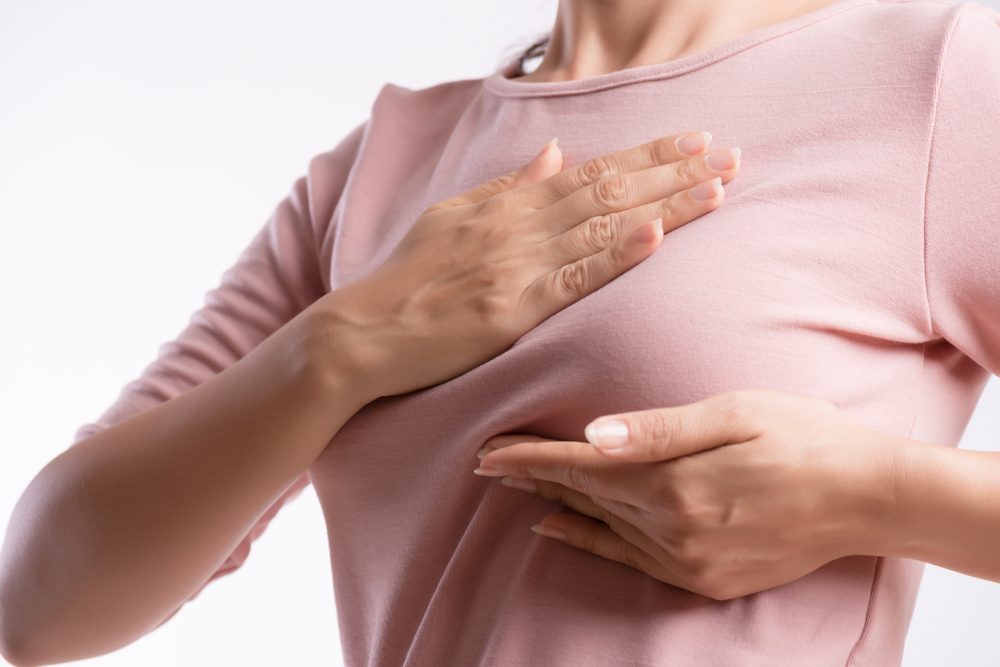Knowing how your breasts normally look like and feel like is an important part of life.
Finding a lump in your breast can be frightening. Although breast cancer is the most common cancer found in women, most breast lumps are not cancer. In fact, more than 80 percent of them end up being benign.
In a small percentage of women, a painful breast lump turns out to be cancer.
In this article we will talk about breast lumps, how big they are to be cancerous, and what do they feel like.
Table of Contents
What Does a Breast Lump Feel Like?
Fat, nerves, blood vessels, fibrous connective tissue, glandular tissue, and a sophisticated system of milk-producing lobule and ducts make up your breasts. Lobules are where the milk is produced, and ducts carry it to the nipples.
This anatomy provides a bumpy, uneven topography in and of itself.
Anatomy of a Breast Lump
The presence of a lump in the breast stands out against the background of normal abnormalities.
Breast lumps that are benign can be rigid and unmovable, like a dried bean. These lumps can be movable, squishy, and fluid-filled, like a grape that you can roll between your fingers.
Why Does Breast Lumps Occur in the First Place?
Nobody’s breasts are the same, and how they look and feel may change throughout the menstrual cycle.
Many conditions and medications could cause lumps in the breast. Study shows that these conditions could be due to: transition to menopause, birth control, including pills and injections and pregnancy.
How Big is a Normal Breast Lump?
A lump may be pea-size, smaller than a pea, or even several inches across, although this larger size is rare.
Is a Lump in Breast Always Cancer?
No. As we have already discussed, 80% of the breast lumps are benign, meaning they are harmless.
In some cases, a breast lump may turn out to be cancerous. Let’s know how does breast lump feel like which is cancerous.
Cancerous Lumps in Breast: What Does it Feel Like?
The mobility of a benign breast lump distinguishes it from a malignant breast lump.
A fluid-filled lump that rolls between your fingertips is less likely to be malignant than a firm, rooted lump in your breast.
Another rule of thumb concerns discomfort.
Breast cancer normally does not cause pain. Although there are exceptions to this rule, benign illnesses can sometimes do so.
Inflammatory breast cancer, for example, is an uncommon type of breast cancer that can cause aching, tenderness, discomfort, or burning in the breast.
Do Breast Cancer Lumps Move?
Most lumps will be movable within the breast tissue on examination, but breast lumps typically do not move around the breast.
However, sometimes a breast lump will be fixed, or stuck, to the chest wall.
Read more about cancer-causing foods to avoid.
Medical Tests for Breast Lumps: How to Know If Its Cancer?
According to the top reviewed Plastic Surgeon in Lahore, Dr. Mehwish Ihsan Butt “Medical tests, such as an ultrasound, a mammography, or a fine needle aspiration (FNA) are mostly used to detect a cancerous lump in your breast.”
Fine needle aspiration is done by your doctor where he uses a tiny needle to withdraw a piece of the lump for laboratory analysis.
Not all benign breast lumps, at least not straight away, will necessitate extra testing.
If you discover what looks to be a fluid-filled cyst during your menstrual period, your doctor may want to examine your breast again towards the end of your cycle to determine if the cyst has vanished.
If the cyst disappears, you will know that your lump was truly benign and caused by menstrual hormonal swings.
Read more about pimples on breast and what does they mean.
What Are Other Possible Symptoms of Breast Cancer Other Than Breast Lumps?
You may have a question about what breast cancer feels like. Well, in addition to a lump, you may experience one or more of the following most common breast cancer symptoms:
- Swelling on part or all of your breast
- Nipple discharge (other than breast milk, if breastfeeding)
- Skin irritation or scaling
- Redness of the skin on the breast and nipples
- A thickening of the skin on the breast and nipples
- A nipple turning inward
- Swelling in the arm
- Swelling under the armpit
- Swelling around the collar bone
When Should You See a Doctor?
Breast cancer is the most common cancer diagnosed in women. Most breast lumps aren’t cancerous.
You should visit your doctor if you see or feel anything new or unusual in your breast during a self-exam. Moreover you should also work on increasing your blood oxygen levels so that you are on a steady path of recovery.
The sooner breast cancer is detected, the sooner treatment can begin, and the better your outlook will be.
Takeaway!
Delaying treatment is linked to a more advanced level of breast cancer and a lower overall survival rate. The survival percentage is relatively high when breast cancer is diagnosed and treated early.
Self-examination on a regular basis can help you learn what’s normal for you. It can also assist you in detecting changes early on.
Certain things can help distinguish malignant from noncancerous breast tumours. However, this isn’t always the case. It’s best to consult a well-known oncologist if you see a lump in your breast. You can do that via Healthwire.pk.
